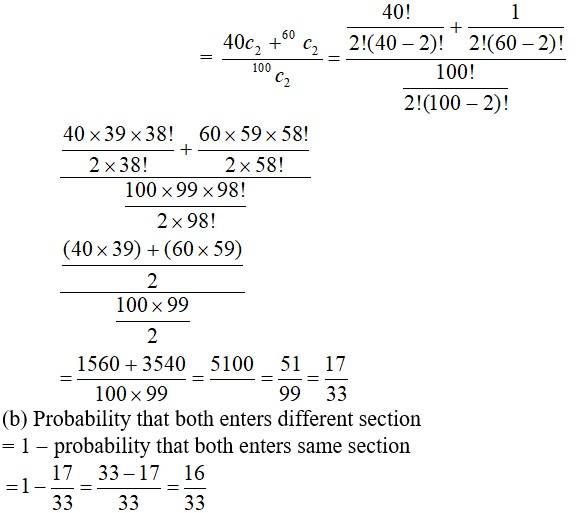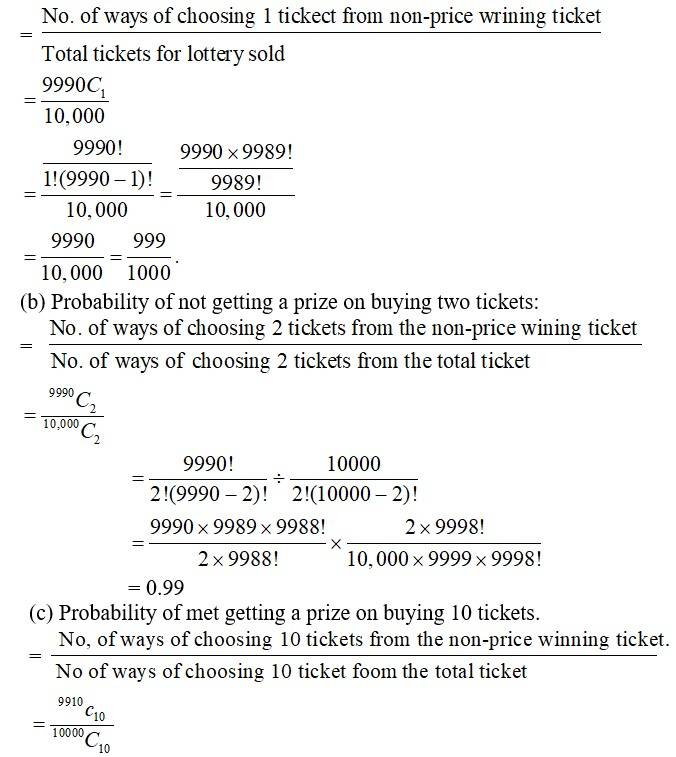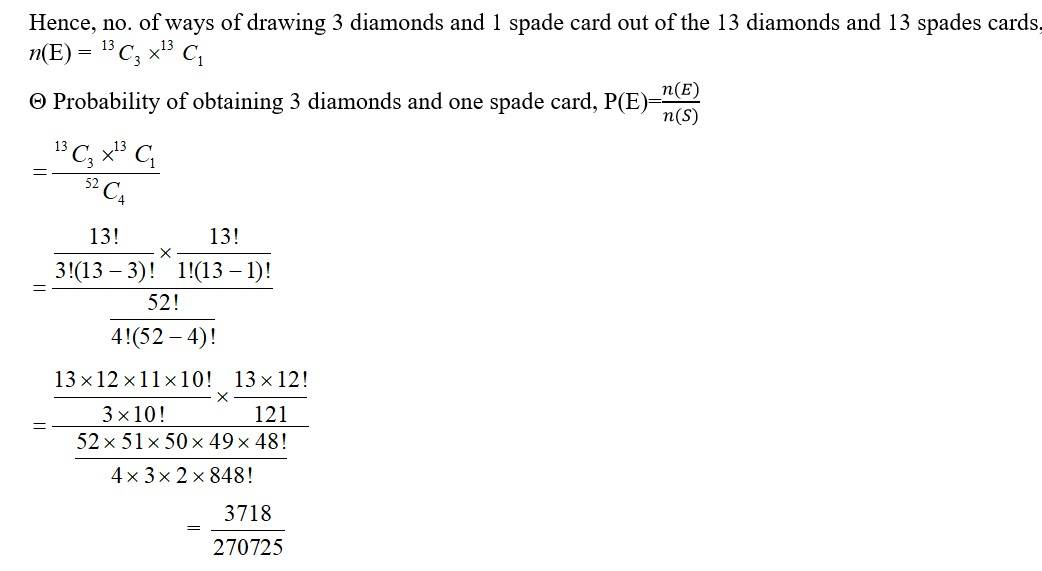Probability
Get insights from 306 questions on Probability, answered by students, alumni, and experts. You may also ask and answer any question you like about Probability
Follow Ask QuestionQuestions
Discussions
Active Users
Followers
New answer posted
6 months agoContributor-Level 10
54. Since, the lock can be open by a combination of four digits from the given ten digits I e, from 0 to 9. The number of ways of selecting 4 digits, = 10C4
This combination of 4 digits can again be arranged within themselves in 41 ways. So, total number of

New answer posted
6 months agoContributor-Level 10
53. (a) No. of ways of forming a four-digit number greater than 5000 from the given digit 0, 1, 3, 5, 7. and digit repetition is allowed can be done in such a way either 5 or 7 and occupy the thousands' place and any of the digits 0, 1, 3, 5, 7 can occupy the remaining 3 places.
Hence, the required no. of ways = (2* 5 * 5 * 5) - 1
= 250 - 1 = 249
Here 1 is subtracted because 5000 which can be formed by the permutation of the given digits is not allowed
Hence, n (s) = 249.
Similarly, in order to formed a number divisibleby 5 we need to have either 0 or 5 in the one place.
The required number of ways = 2* 5 *5 *2 - 1
= 100 - 1
= 99
New answer posted
6 months agoContributor-Level 10
52. Total no. of person selected to represent the company n (s) = 5.
Let A: person is male.
A = {Harish, Rohan, Salim}
n (A) = 3
And B: person has one 35 yes of age.
B = {Sheetal, Salim}
n (B) = 2
And A ∩ B = {Salim}
n (A ∩ B) = 1
Probability that person is either male or over 35 years.
= P (A ∪ B) = P (A) + P (B) P (A ∩ B)
=
New answer posted
6 months agoContributor-Level 10
51. Given, P (A) = 0.54
P (B) = 0.69.
P (A ∩ B) = 0.35.
(i) P (A ∪ B) = P (A) + P (B) - P (A ∩ B)
= 0.54 + 0.69 - 0.35
= 0. 88
(ii) P (A? ∩ B? ) = P (A ∩ B)? = 1 - P (A ∪ B) = 1 - 0.88 = 0.12
(iii) P (A ∩ B? ) = P (A) - P (A ∩ B)
= 0.54 - 0. 35 = 0.19
(iv) P (B ∩ A? ) = P (B) - P (A ∩ B) = 0.69 - 0.35 = 0.34
New answer posted
6 months agoContributor-Level 10
49. Here, out of 100 students, first section has 40 students and the rest I e, 60 students enters in second section.
As me and my friend are among the 100 students.
The no. of ways of selecting 2 students from the 100 students
= 100C2
(a) When both enters first section if 2 of us are among the 40 students that are to be selected. Similarly, if both enters second section among the 60 students for that section.
(if 2 of us)
Hence, no. of ways of selecting both in same section = 40C2 + 60C2
Probability that both of us are in same section

New answer posted
6 months agoContributor-Level 10
48. Total no. of ticket for lottery sold = 10, 000
No. of ticket that are awarded prize = 10
So, no. of ticket that are not awarded prize = 10.000 - 10
= 9990
(a) Now, probability of met getting a prize if we buy one ticket

New answer posted
6 months agoContributor-Level 10
47. Since the die has two faces each mark 1, three faces each marks 2 and one face mark 3.
The possible sample space of outcome is.
S = {1, 2, 3} so, n (s) = 6
(i) P (2)
(ii) P (1 or 3) = P (1) + P (3) =
(iii) P (not 3) = 1 P (3) = 1 - =
New answer posted
6 months agoContributor-Level 10
46. Total number of ways of drawing 4 cards from a duck of 52 cards, n (s) = 52C4
Total no. of diamond cards = 13
Similarly, total. no. of spades cards = 13

Taking an Exam? Selecting a College?
Get authentic answers from experts, students and alumni that you won't find anywhere else
Sign Up on ShikshaOn Shiksha, get access to
- 65k Colleges
- 1.2k Exams
- 679k Reviews
- 1800k Answers
